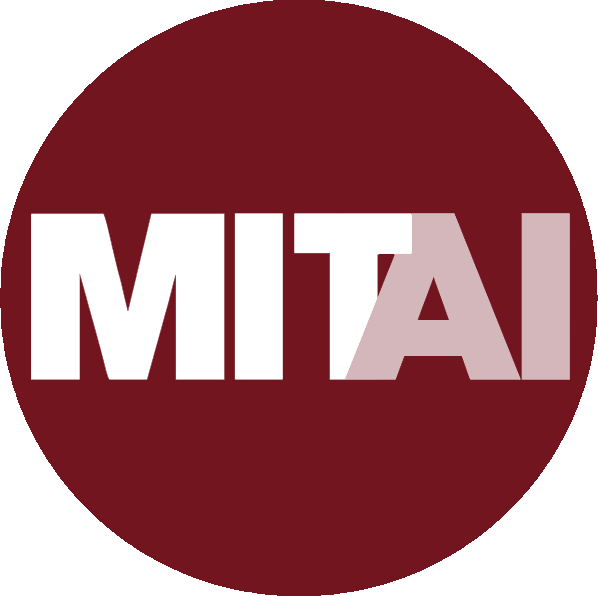How Do We Shift From Four Years to Lifelong Learning?

Reframing Higher Ed for the Next Generation of Work
School is back in session, and at PLASTARC, we’re curious about what’s happening beyond campus as much as on campus. Increasingly, higher ed doesn’t look like four years and a degree. What does this mean for everything from our social networks, to our careers, to continuing education? Read more about the takeaways that apply to our workplaces in OOM.
On our minds
Some of us (Boomers and Gen-Xers) spent all of elementary school seated next to the same kids, whose names were closest to ours in the alphabet. These days, elementary schools are adopting new approaches to accommodate the fact that not all students learn in the same way, and the old "standardize and chill" methods have long been outdated. For students to be engaged, they must see the connection between the material and their own lives.
Kids legally have to attend school. But no one forces adults to attend college, and overall, more Americans are opting out. Enrollment numbers have yet to recover to their pre-pandemic levels. In fact, there's a looming "enrollment cliff," since the US birthrate plummeted around the Great Recession of 2007-09. But it's more than the fact that America is aging out of college. The on-campus college experience costs 40 times more than it did in 1963. President Biden's plan for student debt cancellation was foiled by the Supreme Court. Rather than taking on such debt, more members of Gen-Z are opting for trade schools and community colleges. College-educated folks have historically had higher employment rates, but the benefits are not evenly distributed.
In general, young adults are questioning the value of the on-campus experience. The result has been an "unbundling" of traditional higher education from the various other benefits that might come from a four-year, on-campus experience, including mentoring, social network development, research opportunities, and lifelong learning. Networking has shifted from relying on alumni contacts to utilizing LinkedIn and co-working spaces. Mentoring can occur through apprenticeships and internships just as easily as on-campus. Some folks are pursuing formal education in a more piecemeal way. They don't want to pay for an expensive degree that forces them to take classes they're not interested in. Instead, they're learning skills online from providers such as Coursera, Hubspot, and Skillshop. Gen-Z is organically shaping a post-high school education landscape that aligns with their values. Affordability and real-world employability are top concerns.
So how does all of this relate to the workplace? For one, it provides insight into the practices and expectations of our next generation of workers. It also highlights some of the changes we've observed in the workplace over the past decade. Many workers fail to see value in the (corporate) campus experience. Last year, a fourth of our work time was remote. This shift points to two key facets of our current and future workplaces: distribution and virtualization.
Distribution refers to the time and location where work is performed. It encompasses hybrid and remote work, as well as time flexibility. Deadlines will always be critical, but mandating when people do the work to meet those deadlines is often less necessary. Employees are demanding flexibility. According to a Work Institute study, the lack of flexibility is among the top three reasons employees leave their jobs. (The other two are a lack of advancement opportunities and health issues.)
Virtualization is about moving experiences that used to happen in a physical realm into a digital realm, and this goes far beyond digital "office" software. It's about training, mentorship, relationship-building, and spontaneous interactions that build morale. Many of us immediately think "screens" when we hear the term "virtual." However, future methods of education and the next generation of virtual experiences are still being imagined, constructed, and coded. These future learning environments will be immersive simulations of current and future career challenges, from simulating triage for nurse training and augmented surgeries for doctors, to desktop simulations of natural disasters for building engineers. This augmented reality can certainly be delivered on or off campus.
Technology is changing at an unprecedented rate. As life expectancies increase and birth rates decline, many of us can expect to be in the workforce an additional decade or more. A four-year degree is no longer sufficient to prepare someone for a 40-year career. Young adults are making choices that suggest we need different, more integrated models — perhaps two years of education, followed by entering the workforce, and then, every decade, returning for another year of learning. The workforce should be responsive to changing needs, in a way that goes beyond a day seminar or a week-long certification program. Research shows that we thrive as lifelong learners, and employers are beginning to recognize and address this. At PLASTARC, we believe the workplace itself should be a learning environment, full stop. All of our spaces, physical and virtual, should be dynamic enough to accommodate that.
Gen-Z is recognizing that we need new systems. Young adults are creating the path forward, despite a sometimes subpar support infrastructure. While the infrastructure is beginning to catch up, students design their own educational and mentorship experiences. The next step is for us to understand that we are all students, regardless of our age. We must remain students, driven by our own curiosity, to meet the demands of our current economy and job market. This idea may feel overwhelming, but if employees are given time, space, and tools to grow, we can reframe this into a supported celebration of our brain's plasticity.
From the archives
Over the last couple of Septembers, we were thinking about AI in the office and what we can learn from online education about remote work. Before that, we were exploring how workplaces should adapt to relatively short employee-tenure (compared to earlier generations of workers) and making fresh starts, even when things feel uninspiring. Back in 2020, we were curious about the role place plays in forming our memories.
We'll leave you with this Vox podcast about the Southern takeover of American culture. It's a deviation from our theme, in that it focuses on the campus experience – in particular, the public Southern university campus experience and why it is becoming such a big draw for out-of-state students. We hope you'll find it interesting; plus both Beyonce and the Civil Rights Act get shout-outs.
In Case You Missed It
It’s easy to overlook things in the back-to-school and pumpkin-spice hubbub.

Examining Urban Communication
Are you a researcher studying human communication in the context of physical and virtual environments? If so, you may be interested in applying for EDRA’s Michael Brill research grant. Proposals are due Oct. 15.

Standouts at the Armory Show
Missed the Armory Show or some of the Armory Show (because it’s gigantic!)? The New York Times offers this run-down.

Greenlighting Sustainable Ideas
Did you miss Bloomberg Green Seattle? Watch this short video, featuring highlights on immigration, environmental justice, clean energy, and more.

College Disorientation
To expand on some of the observations from this newsletter, check out this podcast about the real-world impact of policy changes affecting higher ed.
Looking Ahead
What’s on your “to-do” list in the coming months? Here are some events that are hovering at the top of our list(s).




